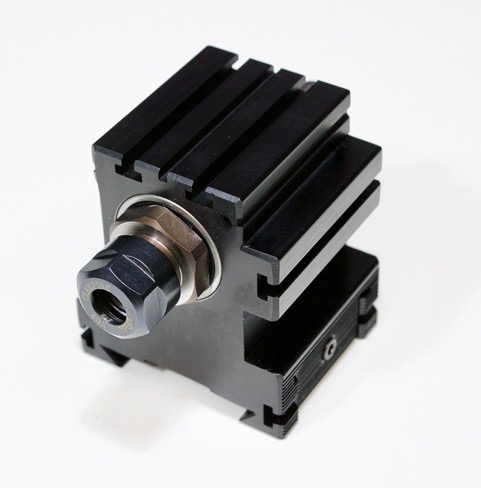***Disclaimer: If the design ends up working well, and I can turn a worthwhile profit selling it, I may attempt to sell this product and make it into a business.***
I'm working on a design for a cue lathe where the main parts are 3D printed.
I don't know if this will work well, but it will be fun designing it. I thought it would be fun to share the progress as I go.
I have the headstock roughed in below. The small details aren't in yet, just roughed in for now. I'll update as I go.
Goals:
-Target customer is a pro-sumer who does his/her own tips, but wants something motorized and specifically designed for cue tips.
-Cheap
-For tips only, no other work
-Uses utility knife blade method to trim sides and front of tip
-No cross slide. Steady rest only for the blade.
-Utility knife blade holder that works together with features built into the steady rest to guide the blade for both shearing the side of the tip, and shaping the front of the tip.
-Plastic double angle collet to hold the shaft.
-Bed of aluminum T-slot.
-Other parts 3D printed.
Challenges:
-Concentricitiy of workholding using 3D printed parts.
-Strength and longevity of 3D printed parts.
-Build time required of 3D printed parts.
-Safety of utility knife blade method for prosumer level customers.


I'm working on a design for a cue lathe where the main parts are 3D printed.
I don't know if this will work well, but it will be fun designing it. I thought it would be fun to share the progress as I go.
I have the headstock roughed in below. The small details aren't in yet, just roughed in for now. I'll update as I go.
Goals:
-Target customer is a pro-sumer who does his/her own tips, but wants something motorized and specifically designed for cue tips.
-Cheap
-For tips only, no other work
-Uses utility knife blade method to trim sides and front of tip
-No cross slide. Steady rest only for the blade.
-Utility knife blade holder that works together with features built into the steady rest to guide the blade for both shearing the side of the tip, and shaping the front of the tip.
-Plastic double angle collet to hold the shaft.
-Bed of aluminum T-slot.
-Other parts 3D printed.
Challenges:
-Concentricitiy of workholding using 3D printed parts.
-Strength and longevity of 3D printed parts.
-Build time required of 3D printed parts.
-Safety of utility knife blade method for prosumer level customers.
